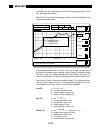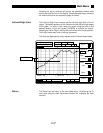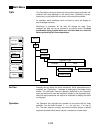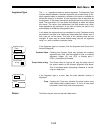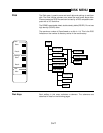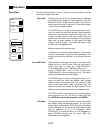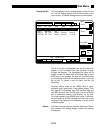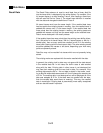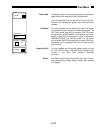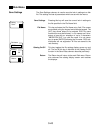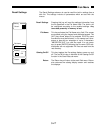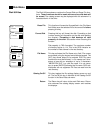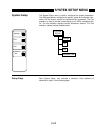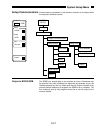
Disk Menu
5-44
Recall Data The Recall Data submenu is used to recall data from a binary disk file
into the trace which is displayed by the active display. For example, if the
full screen display is a chart showing Trace 2, then recalling a trace from
disk will read the file into Trace 2. The stored trace definition is recalled
with the data and changes the definition of Trace 2.
All stored traces must have the same length. If the recalled data trace
has less points than existing traces in memory, then the recalled trace is
padded with zeroes until it is the same length. If the recalled data has
more points than the existing traces in memory, the existing traces are
padded with zeroes until they are the same length as the recalled trace.
Data is never destroyed in the recall process.
If the recalled trace has more points than the existing trace buffer alloca-
tion (16k points for 4 stored traces, 32k for 2 stored traces, or 64k for 1
stored trace), then as many points are recalled as will fit in the existing
trace buffer (starting with the most recent data). The other existing traces
are either padded with zeroes or left alone, depending upon how many
points are presently stored.
Data files may not be recalled into traces which are not presently being
stored.
The existing marks are replaced with the marks recalled with the data.
In general, the existing lock-in state may not agree with the state stored
in the recalled data file. In this case, the lock-in state is also recalled
along with the data. Existing data in other traces is not destroyed but
may lose their meaning given the new lock-in state. For example, if the
existing data sample rate is 1 Hz and data is stored in the traces, recall-
ing a data file whose data was stored at 2 Hz will change the sample rate
to 2 Hz. The existing data is not destroyed but will be displayed as if the
data was sampled at 2 Hz. If the state was not recalled with the data,
then the recalled data would have no meaning. This way, the recalled
data is meaningful. Existing data is presumably more easily recaptured
and can also be saved if important.



